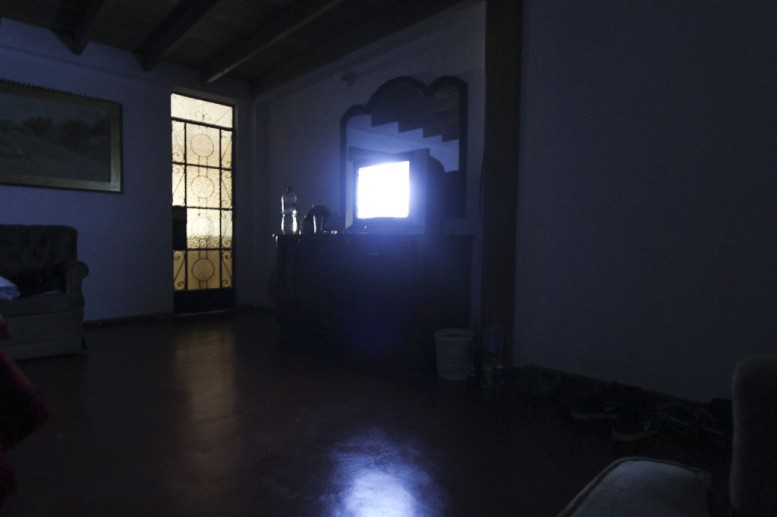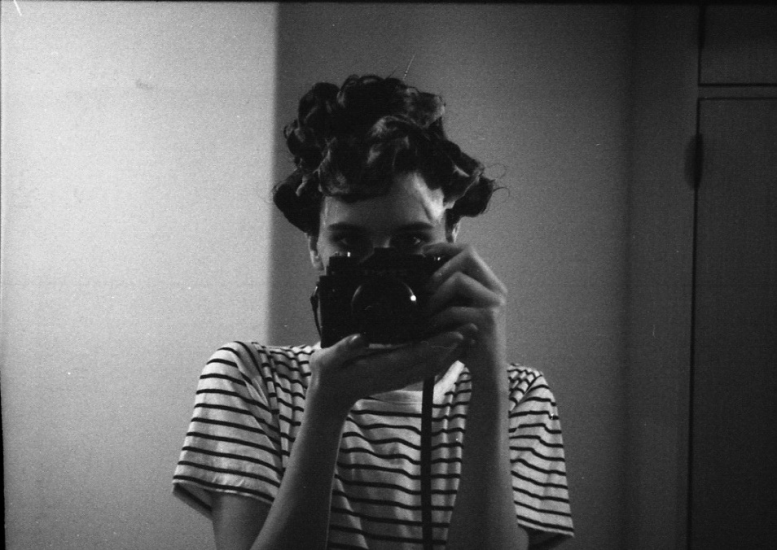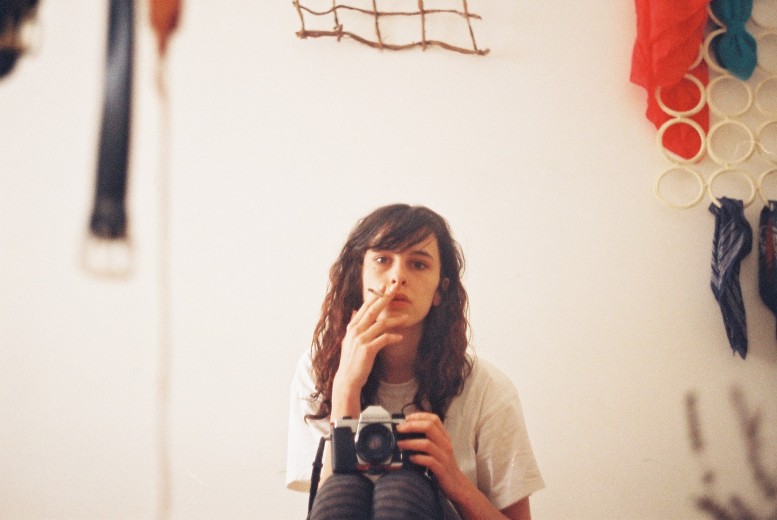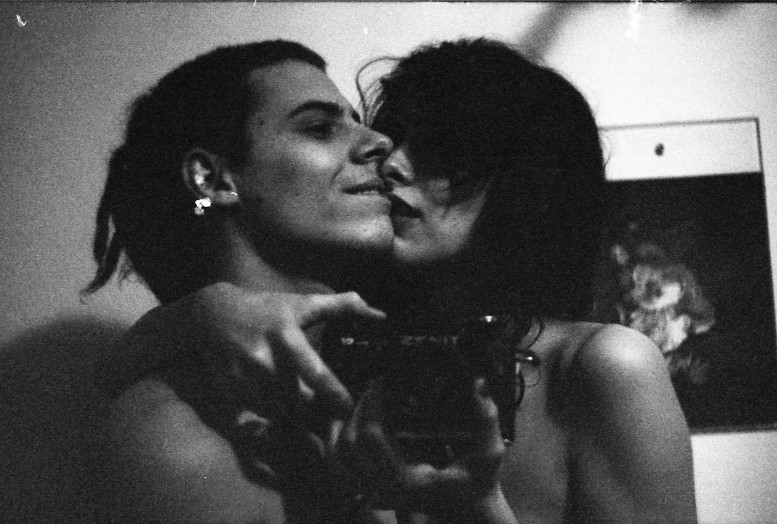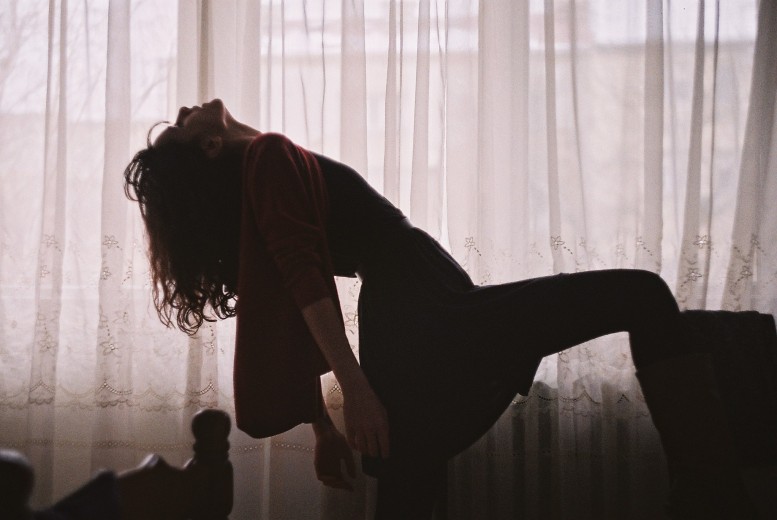Gian Cruz is an up and coming photographer from Manila, Philippines who is also studying art theory and criticism at university. With hints of Daido Moriyama, Cruz's photography are a quotidian, photographic diary of his life. Razor sharp grainy black & white images capture his subject often with their heads, arms, legs, face cut out from the photograph entirely. Gian Cruz is definitely a photographer to keep an eye on. See interview after the jump.
PAS UN AUTRE: What brought you to photography?
GIAN CRUZ: There are a lot of things that brought me to photography, but the two major motivations would be my fascination with cinema and the inherent paradox with taking photographs which I got from reading [Milan] Kundera. Being a cinéphile led me towards this desire to render my quotidien into cinematic images or to fashion photos that I take as if they are from some film or collectively as if they are film stills. My aesthetic was much inspired by the films I’ve loved from childhood which were Wong-Kar Wai films and a lot of films from the Nouvelle Vague cinéastes.
As for the paradox that charmed me with photography, it’s something lifted from the pages of Milan Kundera’s Les Testaments Trahis that has gone to a state of hyperawareness each time I take photographs. He said something about remembrance as to not being the opposite of forgetting but rather a form of it. Ever since, I have read that, it hasn’t failed to escape my mind. As memory is often seen through images, I find photography as a means of forgetting or forging elsewheres. For instance, you could be having a difficult time in your life yet on the surface these photos look like images of utmost sophistication and as these images further themselves into reproducibility, it turns things into something else. In a lot of the things that I do, I often like to see it in this love/hate relationship, or in this ironic manner because I believe it’s something that makes your images richer perhaps with meaning or some other unspoken aspect that your spectator could fathom from them.
AUTRE: Can you remember the first image you ever took?
CRUZ: I can vaguely remember the first image I ever took. When I started taking photos, I wasn’t really too big on the quality of my images but things started to change when I started to find my photographs as a crucial means of self-expression and of exploring my identity. Probably, maturity and the things I exposed myself to over the years- films, books, etc. paved way to take photography more seriously.
AUTRE: How does living in the Philippines inspire your work?
CRUZ: Living in the Philippines present itself as some form of paradox. I often come up with this love/hate discourse about my country. Quite specifically, it’s more about Manila, the city I live in. At times, my images could be some declaration of love for Manila and the things I love about it. On other occasions, it is this profound accumulation of anguish of being in it and this difficulty of living in a city wherein you feel you’re always underrated because the things you love do not fall into the aesthetic canon of the public here. And in this sort of love/hate relationship, I find it enriching my creative process. I think if it was all about loving something, it would turn out to be a dead-end because there wouldn’t be a sense of self-reflexivity working its way. Irony is crucial these days or perhaps humourising yourself finds itself more entertaining.
AUTRE: Who are some of your biggest influences?
CRUZ: Well, in the domain of photography my biggest influences include Nan Goldin, Jeurgen Teller, Robert Doisneau, Richard Avedon, Peter Lindbergh, Helmut Newton, Evelyn Jane Atwood, Sally Mann, Inez & Vinoodh, Robert Mapplethorpe, Karim Sadli, Sofia Sanchez et Mauro Mongiello, to name a few. And quite recently, I’ve also developed a deep admiration for the photography of Sunny Suits because of the palpable intimacy resting on her images.
Photographic references aren’t necessarily an impulse for taking photographs chez moi. Other domains like art, music, dance, literature, and cinema often inspire me as well. A few names I find indispensable and always inspiring me would be: Eric Rohmer, Claude Chabrol, Georges Bataille, Patti Smith, Bertrand Bonello, Serge Gainsbourg, Paul Eluard, Wislawa Szymborska, Alain Resnais, Johannes Brahms, Wong Kar Wai, Jean-Luc Godard, Friedrich Nietzsche, Dries Van Noten, Melvil Poupaud, Jean-Pierre Melville, Yves Saint Laurent, Jacques Demy, Maria Callas, Grégoire Chamayou, Nicolas Bourriaud, Pina Bausch, Mehdi Belhaj-Kacem, Elizabeth Peyton, Michel Maffesoli, Jean Baudrillard, Susan Sontag, Merce Cunningham, Joris-Karl Huysmans, Marguerite Yourcenar, Joni Mitchell, Neil Young, J.M. Coetzee, Marguerite Duras, Marcel Proust, Walter Benjamin, Alain Badiou.
AUTRE: What do you think about when you look through the viewfinder?
I often am intuitive when I take photos. I can easily get lost in the moment and get into this frenzy of taking one image after another. At times, it could also be this subject gesturing you towards these particular angles I’d find aesthetically pleasing. There’s really no singular thought that comes into my mind each time I look through the viewfinder, it is dependent on my mood, the subject, what’s currently going on.
You can follow Gian Cruz's blog here. Text by Oliver Maxwell Kupper for Pas Un Autre.
AUTRE: Who are some of your favorite subjects to photograph?
CRUZ: My friends are often my favourite subjects to photograph. I like taking images of people I am in close terms with because you’d have a way of fashioning how the images would turn out to be that speaks of your relationship with them. That in itself already says a lot of things or would have the potential of taking your photos to some profound elsewhere. It’s like taking pride of being able to see things the way only you would. Often times, my bestfriend Mark Arvin ends up in front my lens and he humorously declares himself as my official muse. Other than my friends, I like taking photos of objects that create narratives of something in lieu of the person. I’m quite the romantic often taking interest in something like a photo of my belongings like the books I’m reading (I seem to even find them more charming when they’ve gained creases or the usual wearing out because I bring them along with me a lot) or the albums I’m listening to, a well worn article of clothing and many other possible objects as being able to tell more about yourself yet not giving everything away in a photograph.
AUTRE: Whats next?
CRUZ: By now, I ought to finish my postgraduate thesis on how death is being represented in contemporary Philippine art, as I am currently an Art Theory and Criticism major at the University of the Philippines-Diliman. Other than that, I ought to pursue photography or fine arts overseas. Perhaps if opportunities come into place an institution in Paris, New York or London or elsewhere would do me good. I like the idea of moving to a new city, which would enable me to grow as an artist. Moreover, there is also this growing concern to find platforms on which to exhibit my photographs, as I’d like to share them to a bigger audience. And if there is some more time, I’d probably be painting self-portraits although a bigger dream project would be to extend my photography into a full-blown film since cinema has always been something I’m passionate about.








